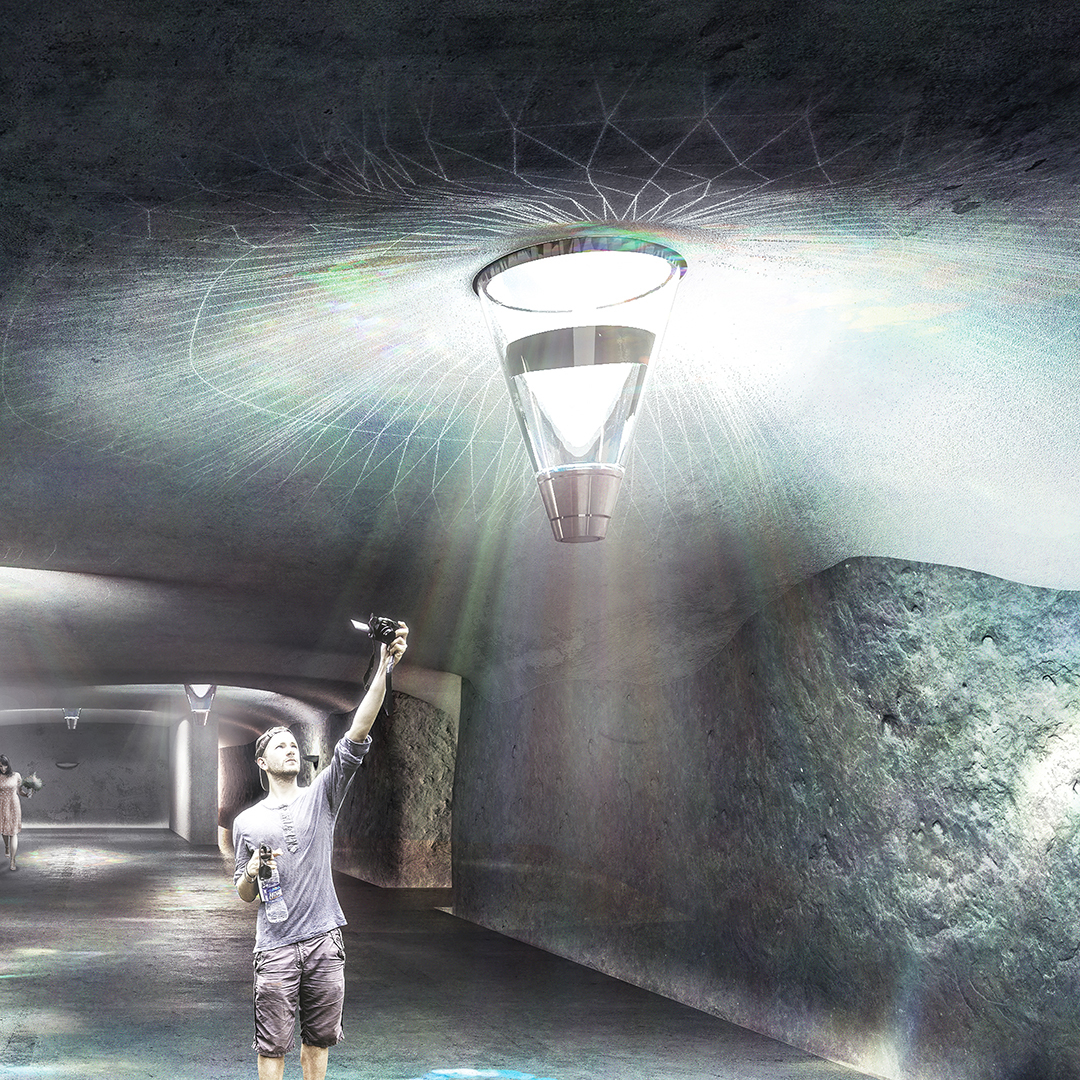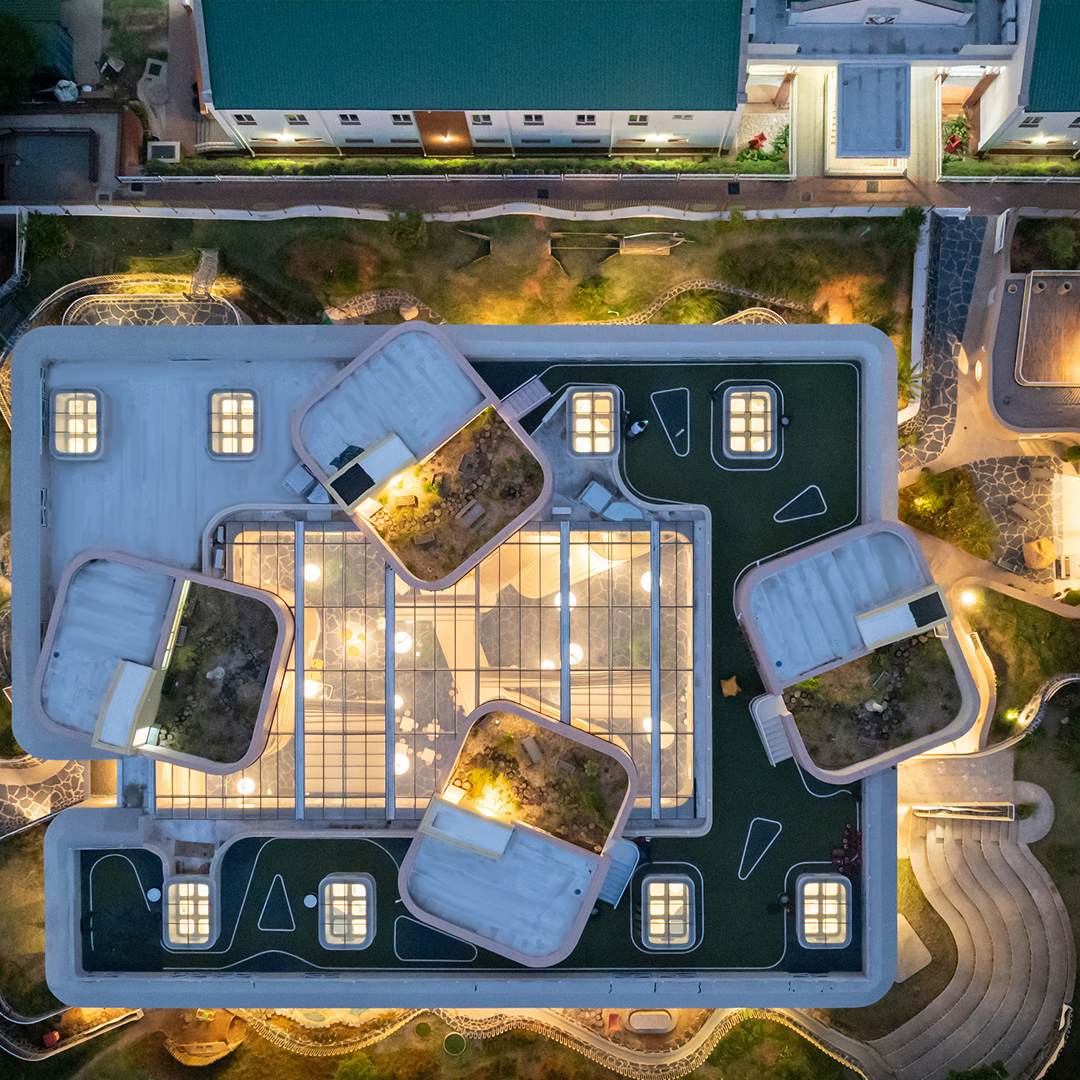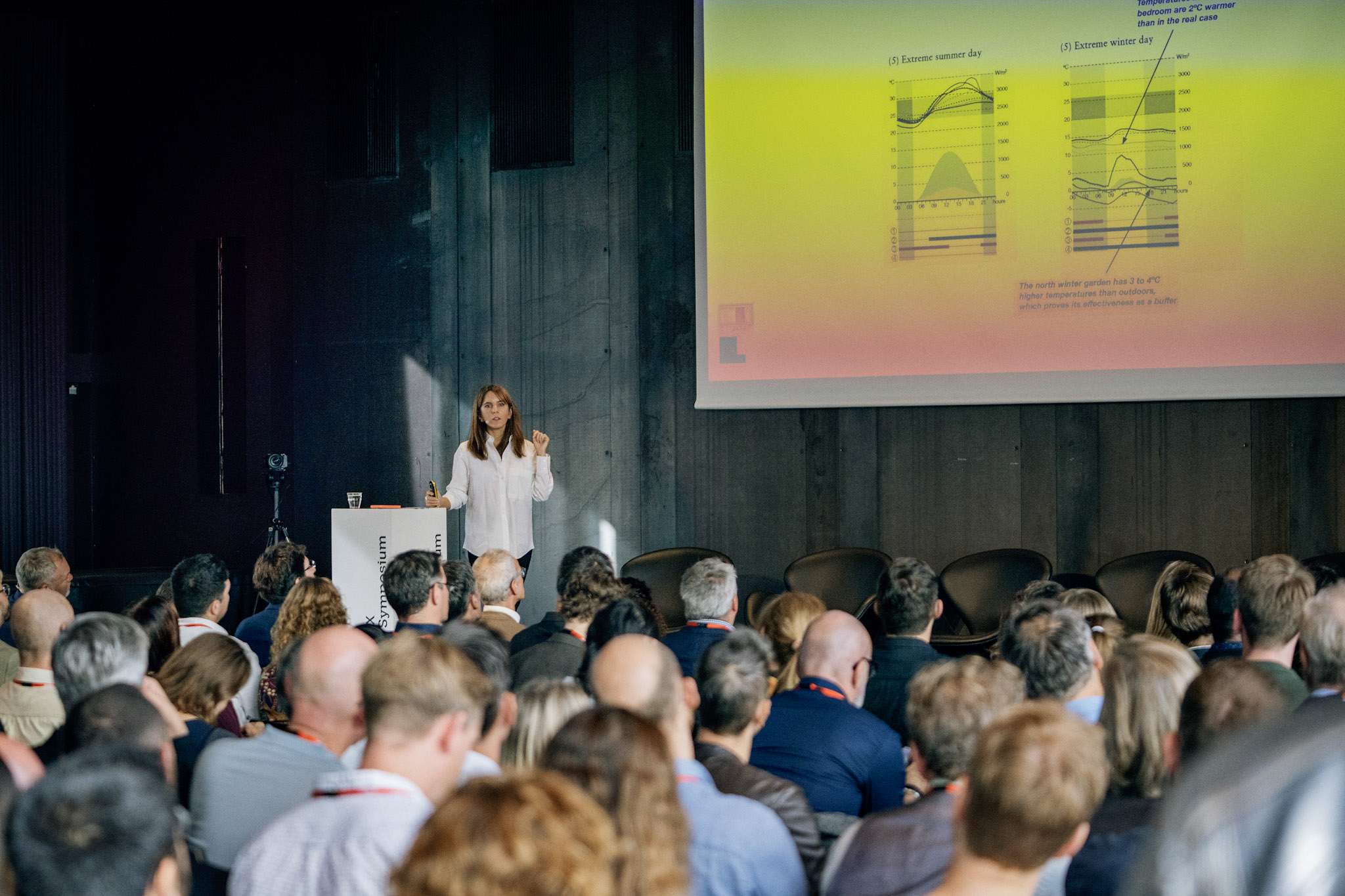Bringing Light Underground
- Meet the Winners from the Americas Daylight in Buildings

“Daylight, in the broad sense, is the energy source that drives basically everything happening on earth,” say the members of the winning team behind the project “Light Liquefaction” about the role that daylight plays in our day-to-day lives. “Light Liquefaction”, which was awarded the title of Regional Winner of the International VELUX Award 2018 in the Daylight in Buildings category, was created by architecture students Ziqi Chen, Shuaizhong Wang, and Zeyu Liu.
“We don’t give much thought to its importance in everyday life. But if we just narrow it down to architecture, daylight is the biggest light source we can find. Utilizing that light source in architecture is very important. It is always a big consideration in our designs.”
Lighting up the ‘dugouts’
“Light Liquefaction” looks at Coober Pedy in Australia (also known as the opal capital of the world) and proposes an innovative solution of bringing light and water to the residents of the village. The village is located in a desert in northern South Australia. Due to the harsh summer desert temperatures and notoriously low humidity, the residents have chosen to live in ‘dugouts’, underground residences − even restaurants and churches have been carved out below ground.
Underground homes may have helped in coping with the unbearable heat in the summer, but the lack of general lighting for the dugouts is still an issue. The intention of the trio’s design is to provide a poetic solution to the needs for both water and lighting in a way that resembles the very nature of what the town is known for − opal.
Regional Winners: (from left) Zeyu Liu, Ziqi Chen and Shuaizhong Wang.
“I read about this site a long time ago in an article,” explains Ziqi about the inspiration behind the project.
“In this site for mining opals, almost half the population lives underground. I was very surprised about this and started wondering how a village can work when it is underground. How do they get daylight?”
“When I saw the topic of the International VELUX Award, this village came to my mind. Opal is a gemstone that can reflect the light in a beautiful way. But the people who mine it, sacrifice their lives to mine it by living underground. I think it is a very interesting topic to discuss,“ he says, but admits there was also another reason why they wanted to work with this specific site.
“We are fans of science fiction movies, and this place is actually a location for filming a lot of Sci-Fi movies. That is another fun thing about this site, and why we were excited to work with it.”
Opal refraction
In the report from the jury meeting, “Light Liquefaction” is described as having impressed the jury with its convincing way of dealing with a concrete issue. The report explains the decision saying:
“The proposed device, a funnel skylight, is actually very simple. At night, the acrylic cover at the top of the tube opens and the water vapour condenses and forms droplets. During the day, the acrylic cover closes and the light passes through the glass sphere and water and is diffracted into colourful beams that penetrate underground. It is a very well-researched and well-presented project − and the jury finds it a very convincing winner of its category for the Americas.”
Futuristic vibes: Coober Pedy has been a filming loation for several Si-Fi movies, which is part of what attracted the trio’s attention to the spot.
Shuaizhong explains how the idea of the project is to find a solution to two issues – lack of light and lack of water – using the very same materials that the residents are there to mine.
“We checked the data of the site and the rain they get there is extremely low. It is almost zero. What we want to do is try to not only bring the light underground, but also bring water. Because the site is very dry and people need to do a lot of work to get water, which is also expensive. Combining these two issues together to create an interesting solution is a good starting point,” says Shuaizhong.
“The site is famous for its opal. We looked into the properties of the opal, why it looks like that, what the particular optical properties of the opal are. We figured that we could recreate some of that in our project. So we used small pieces to collect water, and when the light passes through it refracts and creates beautiful patterns.”
“I think there is a certain beauty about this project where several things come together to provide a solution,” says Zeyu.
“It provides daylight, it provides water and it provides these beautiful patterns, which reflects the sites identity. We think that is the biggest strength of our project.”
Competing for the grand prize
In the end of November representatives from each of the regional winning teams will be coming to the World Architecture Festival to present their project in front of the jury and compete for the title of Global Winner and €5 000. Ziqi, Zeyu and Shuaizhong are not worried about their chances.
“I am excited about everything,” says Zeyu.
“I have never been to Amsterdam, and I have heard it is a beautiful city. The World Architecture Festival will also be the biggest architectural event I have been to, so I am excited about that. I don’t see that there is much to worry about,” he says, admitting that they have confidence in their project.
This opinion is shared by teammate Shuaizhong, who adds, “I am looking forward to winning the first prize.”
See the full project “Light Liquefaction” and all other regional winners here.



